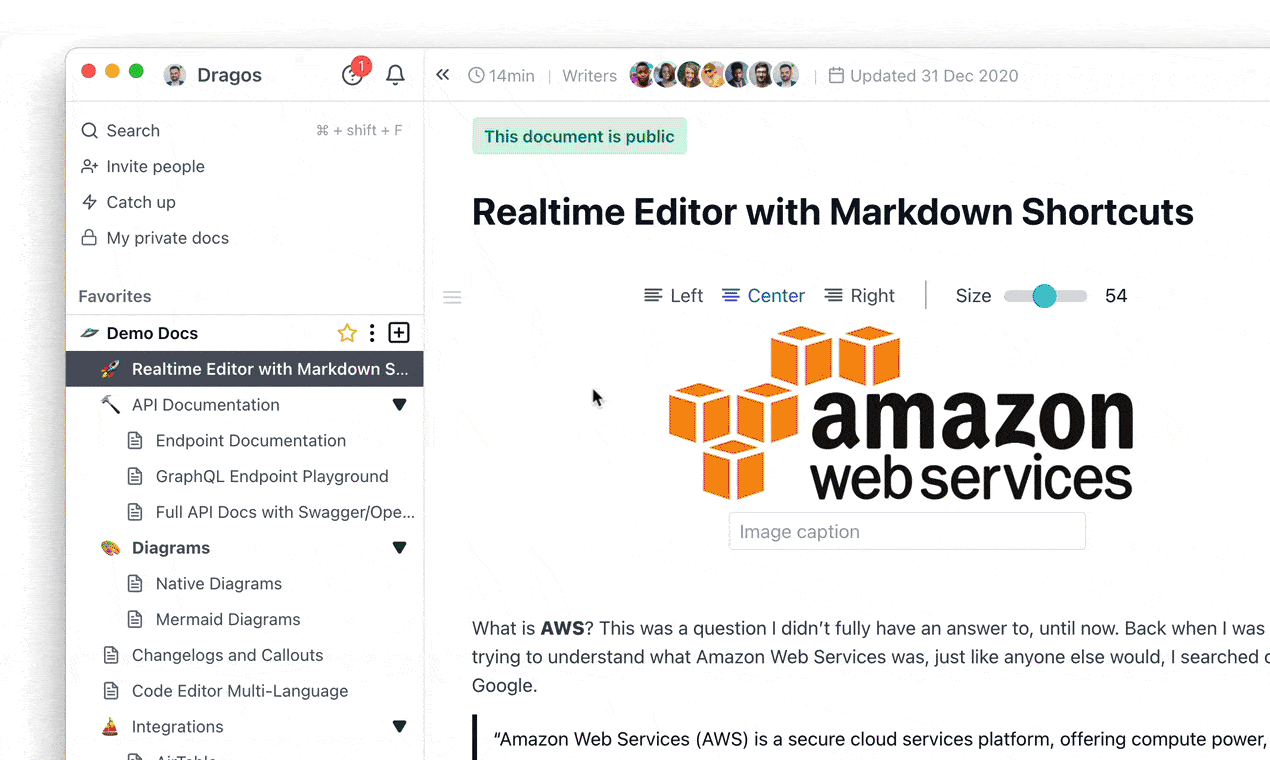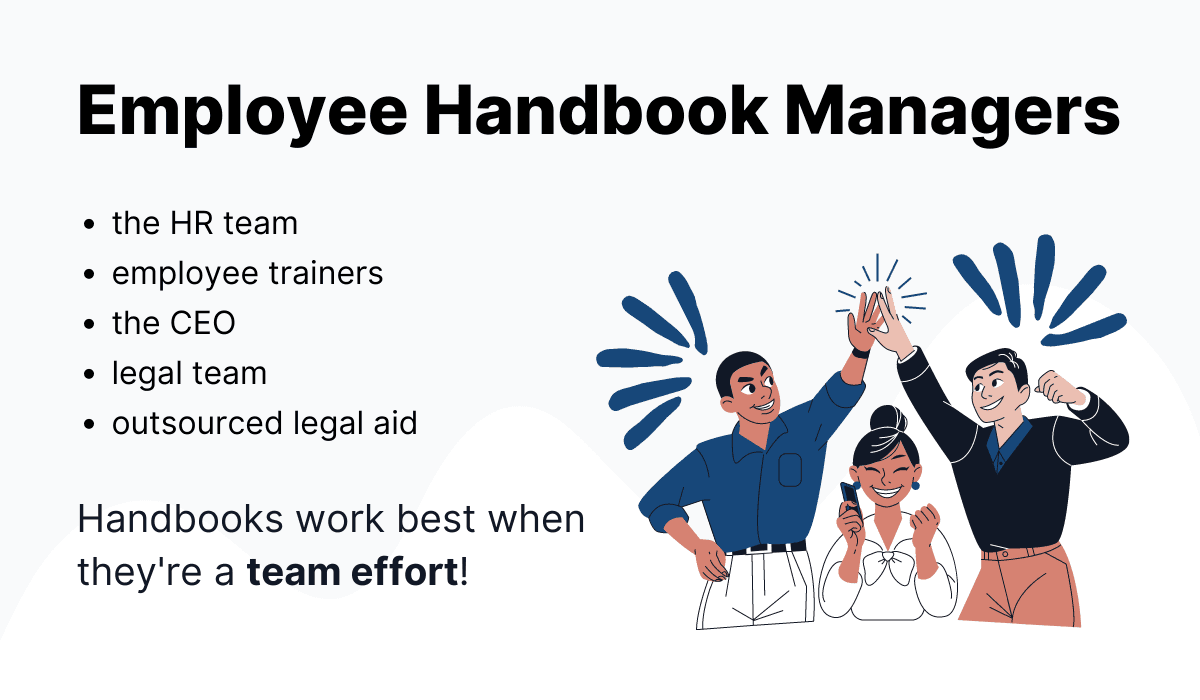It’s no secret that a good employee handbook goes a long way. Some companies are known for their innovative and fun approach to this corporate document, while others don’t even have a guide for their employees.
Nowadays, having a document outlining all your rules and expectations while informing employees of your company culture is a must-have.
You may know all these policies by heart and have a great understanding of the culture at your workplace, but you have to be able to convey it to your employees.
Let’s examine the five best practices to follow if you want your handbook to stand out!
Make the Handbook Available Online
In 2022, the days of paper handbooks are long gone.
Paper is impractical for many reasons, mainly because it’s not easily accessible to everyone and creates waste.
On top of that, paper handbooks become outdated the second there is a new procedure or regulation.
You’re going to have to do an awful lot of printing to hand out these guides to all employees after every change. It’s not financially sound, nor is it modern or accessible.
Therefore, it is better to opt for a solution that can be easily updated to reflect these changes in real-time. Your best bet is the internet.
Start this process by digitizing your handbook. In other words, prepare the document for digital sharing.
Calaméo suggests checking the file type, reducing its size, and inserting links and images. In other words, they recommend making your handbook easily shareable and consumable by the members of your organization.

Source: Archbee.com
Post the handbook somewhere online, so all your employees have access to it, instead of emailing the document to every new employee.
When deciding where to upload your employee guide, pick a safe place anyone from your company can access. A good idea would be using documentation software, such as Archbee, that’s accessible to all team members.

Source: Archbee.com
When a new team member joins, or an existing employee wants to check something in the handbook, they can do it in a couple of clicks.
Some companies choose to post the guide on their website. An example of this is Pronto Marketing, whose handbook received praise for being organized and sleek. A click on a topic leads you to its bookmark, thus saving time.

Source: Pronto Marketing
However, if you don’t want everyone on the internet to view your employee guide, stick to a software solution you can limit access to.
That being said, Pronto Marketing may be attracting new employees precisely by being so transparent with their company rules, so that’s something you can use to your advantage, as well.
The bottom line is that the team won’t turn to your handbook in times of need if you don’t make it easily accessible.
Keep It Organized
An unorganized handbook is as good as a nonexistent one.
Imagine you’re an employee trying to find information on a specific protocol. Your handbook is in paper form, and its index isn’t helping you locate this particular piece of information.
You log into the online version of the guide, but the index is exactly the same. On top of that, there is no search bar, and it’s not exactly intuitive.
What would you do?
Like most people, you would waste time looking for it. This problem is so prevalent today that more than half of employees spend more time finding documents than responding to work emails and messages.

Source: Archbee.com
Clearly, companies have problems with organizing their files. The goal is to do so neatly and intuitively. That way, your team can find the necessary information quickly. Also, decide on what kind of system you want to use.
INC recommends a couple of different ones, like listing policies alphabetically, using the employment timeline, by importance to the company, or relation to the employee’s job.
Handbooks aren’t a one-size-fits-all document, so it’s up to you to pick the most suitable option for your company’s needs.
This means that you shouldn’t just post the whole thing online and hope someone will have the time to scroll through all of it. Instead, add links to specific chapters or sections, so it’s simple to navigate to whatever piece of data the person needs.
Here’s how that can be done using Archbee:

Source: Archbee.com
As you can see, this handbook is divided into different short sections. The titles are pretty self-explanatory to avoid confusion.
New hires will usually read all the points, but, in a pinch, they can always go straight to what they need.
Another downside to paper guides or online ones that happen to be poorly organized is the lack of a search option. You can include an index, but if an employee is looking for a specific term or phrase, they can’t look for it without skimming the entire text.
Truth be told, we’ve all grown accustomed to using the search bar for every question that comes to our minds. Google alone gets 2 trillion searches a day.

Source: Archbee.com
Therefore, it’s clear that people use search engines to get information. Can your employees do the same with your handbook?
Of course, they can’t Google your company’s protocols, but they should be able to use your company knowledge base to search for the necessary information.

Source: Archbee.com
Most company databases, like this one that was built using Archbee, should have a built-in search bar that allows you to look up the entire workspace or a specific segment of the database, thus narrowing your search results.
This is the type of data organization you need to make the handbook as helpful and intuitive as possible.
Dedicate Someone to Managing the Handbook
Companies need to have a handbook manager. Otherwise, there’s no guarantee that the information within is correct or that it won’t get you into legal trouble.
Serious companies assign this duty to an employee or a whole team and put them in charge of adding and removing policies and updating information. We’ll talk more about updating later, as it’s a vital handbook development process.
However, coming up with these rules and writing them down in the first place is equally important.
You might be indecisive when it comes to employee guide maintenance. After all, can one person really cover everything? If that’s your biggest concern, don’t worry! You can always assign specific sections to different people.
For example, an HR expert may be in charge of writing and maintaining your policies, especially those including benefits, workers’ rights, and conduct at the workplace. After all, your HR team is in charge of keeping up with all the relevant regulations to ensure you’re complying with them.
Having HR oversee the creation of your handbook makes perfect sense. The information in the guide shouldn’t be discriminatory or violate any workers’ rights, which your HR will pay attention to at all times.

Source: Archbee.com
On the other hand, a team leader or manager can take on the sections that deal with onboarding and specific everyday work questions, like employee breaks, targets, and communication.
If you have coaches or people in charge of training the team, someone should write down the procedures and ensure they are correct and precise.
Doesn’t that sound better than having one person who isn’t an expert in all fields write it all down?
After all, the handbook has to help employees understand what your company stands for, what you expect of them, and what they’re getting in return.
If the person writing the handbook doesn’t understand the details of each section, they won’t do it justice, thus rendering your employee guide pointless.
You can prevent this by adding another layer of checks—revisions.
The person in charge of managing the handbook should be able to check all changes and approve them because they are published.

Source: Archbee.com
Of course, if you’re a small business and don’t have as many employees or even separate departments, the handbook will likely become the CEO’s responsibility. In that case, just ensure that you’ve covered everything necessary for an employee to be able to do their job.
The data must be correct and cohesive, and none of the policies should infringe on employees’ rights.
Regardless of who writes the handbook, someone with a legal background needs to go over it. Even if all your policies are correct, an attorney or someone similar might spot some legal loopholes.
For example, did you know that the handbook is considered a legally binding contract unless stated otherwise?
If you forget to mention the guide is not a contract and then fail to adhere to it, you could get sued, with very little hope of winning the case.
Make It Interesting
Your handbook has to be captivating. Let’s face it, reading policy after policy written in legalese is a dread, so you need to find a way to keep people reading.
Visual content can bring your employee handbook to the next level. Since your guide should be digital, nothing’s stopping you from adding images and videos, where applicable.
If you add these to your handbook, the chance of employees remembering the information jumps by an incredible 650%!
Moreover, visual content helps your team retain what they’ve learned, since people are 10x faster at processing image-related information.

Source: Archbee.com
Clearly, if you don’t include media such as images or videos in your handbook, you’re doing yourself a disservice and missing out on an excellent opportunity to facilitate information retention.
On top of that, if the media is engaging and entertaining, you’re increasing the chances of employees reading the whole thing.
Zappos is known for its unique and fun handbook that looks more like a comic book than a business document, which is why it’s so popular. Here’s a bit of a background on how this employee guide came to be.
Have you noticed what the Chief People Strategist said?
The old version of the handbook was boring since it was all just words. In an effort to create an exciting and informative piece of content, the HR team turned to employees and asked for their feedback.
The result was an innovative and engaging handbook that became an inspiration to other companies.
Another great way of keeping people interested is to write the policies and instructions in a less formal tone. Instead of using legal terms and professional language, try to bring some humor into it.
You can find the line between staying professional and being entertaining while showing off your company culture.
Zingerman’s handbook is often dubbed the best in the world precisely because it infuses policies with humor. This employee guide keeps proving that work doesn’t have to be boring.

Source: Blue Sky Personnel
In fact, the guide is so interesting that Zingerman’ started selling it. That way, other companies can follow in their footsteps and up their handbook game.
Another company famous for the fun content in their handbook is Viking, whose handbook comics spread over the internet like wildfire. The HR team decided to “troll” their employees and include ridiculous situations and advice on the new health and safety guidelines.

Source: HCA Mag
Their goal was to get people to read the handbook and get familiar with the new guidelines while having fun.
In the end, HR received a lot of questions and feedback regarding their guide, which resulted in the entire office talking about it and having a look. In other words, including something humorous and harmless led to increased interest in the handbook and a lot of fun.
Update the Handbook Regularly
The best handbooks are the ones you constantly upgrade and update.
Just think about all the policy changes you’ve experienced in the last couple of years. There has to be at least a couple, especially considering the pandemic and how it’s changed the way we work. Does your handbook reflect those changes?
If not, your handbook may be severely outdated. Your employee guide stops being useful when you leave incorrect information in it.
Sending an email about changes to company procedures simply isn’t enough. You can’t ask people to read the handbook and then check your policy update email to see which parts they have to wipe from their memory.
This type of oversight will make you seem incompetent and, quite frankly, unreliable.
Some of the handbook policies you should definitely check and update regularly are, among others:
- Covid-related points
- Leave of absence
- Remote work
- Data protection
- Working hours
- Salaries
- Drug testing
- Dress Code
All of these are vital for your business to run smoothly. If you fail to update any, you could complicate matters for yourself, or even run into legal trouble.

Source: Archbee.com
Take rules on mask-wearing as an example. Some states only recommend wearing masks in closed spaces, while others regulate it under public safety laws.
For example, California requires unvaccinated people to wear a mask in some indoor public settings and businesses, too. So, you need to know what your state mandates and what you, as the employer, can legally ask of your employees.
While paper handbooks can be entertaining, they are difficult to update. You need to print out a new guide and notify people of the relevant updates with every change.
If specific policies continuously change, such as all the Covid-related regulations, you’re going to keep updating the handbook or risk it being outdated and incorrect.
Those who have an online guide find it much easier to update. The new version is available immediately, thus decreasing the risk of someone still using the old one.

Source: Archbee.com
The best part about using quality documentation software to house your handbook is that anyone can check which parts got updated, meaning they don’t have to read the whole thing and play ‘spot the difference.’
Databases like these make it easy for your team to stay in the loop and access information freely.
Conclusion
Employee handbooks rules can attract new employees and engage existing ones, thereby accelerating your success.
After all, the goal of a good handbook is to give your employees all the information they need to do their job right. However, the main issue is that people often don’t even read the whole thing because they find it boring and repetitive.
We’ve given you five practical tips to elevate your employee guides and make them as entertaining as they are informative.
As long as you bring some humor into it, have someone in charge of creating, organizing, and updating the handbook, and share it with the rest of the team, you’ll be good to go!
FAQ
Frequently Asked Questions
Yes—an employee handbook is a single source of truth that sets clear expectations and reduces confusion. It helps you: - Align everyone on culture, values, and workplace norms - Explain policies on pay, time off, conduct, safety, remote work, and data security - Speed up onboarding by answering common questions in one place - Drive consistency in how managers make decisions - Reduce risk by documenting compliant policies and processes - Support performance and accountability with transparent standards Tip: Include a clear “this is not a contract” disclaimer and get employee acknowledgments to strengthen legal defensibility.



